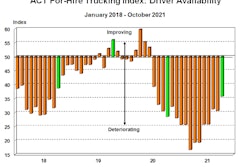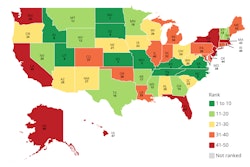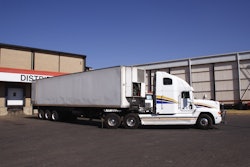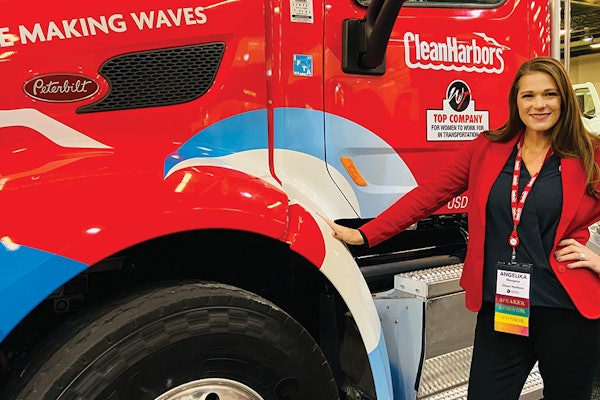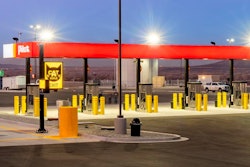Heavy truck orders dropped below 20,000 units in November for the first time this year, a vote of no confidence from fleets and manufacturers to a supply chain that has struggled to find enough components to build tractors.
With upwards of 9,800 orders booked last month, according to preliminary data released by ACT Research and FTR, November's order total is down 41% from October, down 82% year-over-year and was the lowest for the month of November since 1995.
“Long backlog lead times resulting from ongoing supply-side constraints continue to pressure new order activity,” said Kenny Vieth, ACT’s president and senior analyst. "With backlogs stretching into late 2022 and still no clear visibility about the easing of the ‘everything’ shortage, modest November order results suggest the OEMs are continuing to take a more cautious approach to booking orders so as not to extend the cycle of customer expectations management.”
Don Ake, vice president of commercial vehicles for FTR, agreed that November's results are certainly not due to any lack of demand for new equipment, which he said is very high, but rather due to the uncertainty in the supply chain. Class 8 orders total 393,000 units for the previous 12 months.
"Component deliveries, especially semiconductors, have been unreliable since March," Ake said. "OEMs booked a huge number of orders a year ago, expecting to be able to build at full capacity throughout 2021, but parts and components shortages prevented them from completing many of these trucks."
October data, the last full month of data in hand, showed the Class 8 backlog was nearly 281,000 units, Veith said, and at October’s build rate the backlog-to-build ratio was 14.6 months, "illustrating demand versus supply-side challenges," he added.
"After overbooking almost every month in 2021, the OEMs are being extremely meticulous about scheduling commitments in 2022," Ake added. "This strategy will continue until the supply chain situation improves. Once the OEMs are confident they can obtain the necessary production inputs, they will boost production and enter more orders."
Ake said backlogs remain at "sturdy" levels, but OEMs don’t want them much higher until they know their manufacturing capacity.
“Demand for new trucks is at record levels. There is tremendous pent-up demand generated in 2020 and 2021," he said. "Spot rates are at record levels, and contract rates are rising. Prices for used trucks are also at record highs. And when the manufacturing sector of the economy gets past the supply chain crisis, there will be even more freight to haul.”

